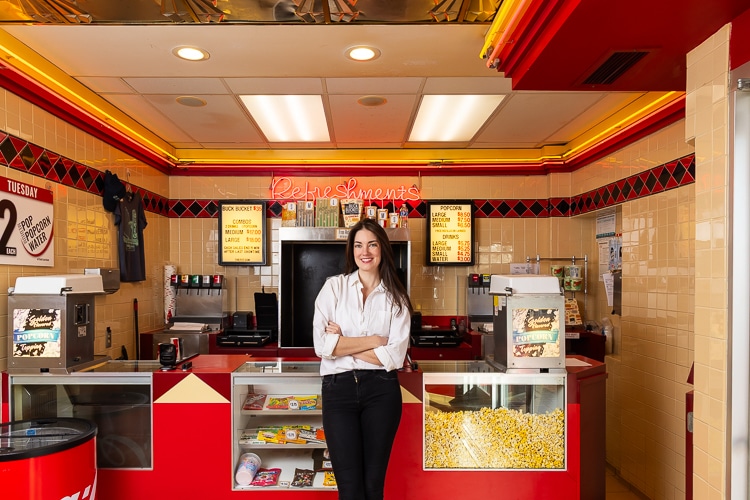The Future Of Metro Mass Transit
For generations getting around Metro Detroit meant one thing: four wheels. Local leaders are pushing hard to give Detroiters the option to travel on two rails. The Woodward light rail and Detroit-Ann Arbor commuter rail lines are tantalizingly close to becoming reality. Metromode takes a look at the viability of these projects and their potential impact 10-20 years from now.
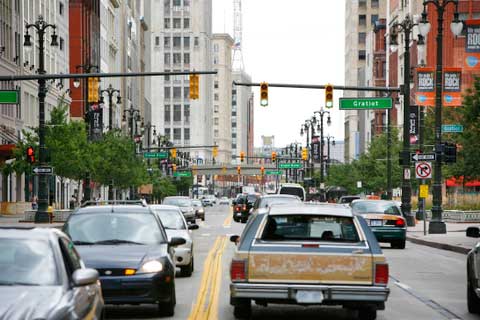
Metro Detroiters have harbored metropolis jealousy for generations. The kind that manifests itself in statements like,”If only Detroit could be more like Chicago…” or Toronto or San Francisco.
These statements usually pop out when we’re contrasting those city’s bustling urban canyons to our Quickstop strip malls. But the comparison isn’t set in stone. In fact, twenty years from now Woodward Avenue could become the envy of cities across the nation, a vibrant, dense and well-traveled corridor whose main feature is the 30 mile light rail line that connects Pontiac to Detroit.
Similarly, a commuter connecting Motown to Tree Town (Detroit and Ann Arbor for the uninitiated) would connect U-M to WSU and Tiger Stadium to The Big House. Whether it was the exchange of academic ideas, weekend vsistors trading cultural experiences or daily work migration, the proposed Detroit-Ann Arbor commuter line would transform both cities and all points in between.
Local leaders from both public and private sectors are pushing forward these two projects in hopes of reversing Detroit’s car-bound legacy.
Comprehensive mass transit has been essential to developing the density and vibrancy in New York, Boston and Portland. Even cities as unlikely as Phoenix and Salt Lake have begun to see what mass transit can mean for their communities. Metro Detroit, unfortunately, has been lacking since its leaders yanked the streetcars off Woodward 50 years ago.
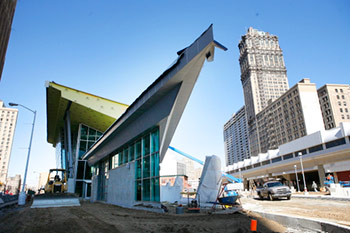 Conventional wisdom says the commuter and light rail projects are the critical first steps to make public transportation comprehensive for the masses in Metro Detroit. Putting these trains on tracks are commonly viewed as the best long-term decisions for reinventing life in a region notorious for thinking five minutes instead of five years ahead .
Conventional wisdom says the commuter and light rail projects are the critical first steps to make public transportation comprehensive for the masses in Metro Detroit. Putting these trains on tracks are commonly viewed as the best long-term decisions for reinventing life in a region notorious for thinking five minutes instead of five years ahead .
“We’re still going to be the Motor City,” says Robert Ficano, the executive of Wayne County. “But at the same time public transportation is going to be one of the most used means to get around the Motor City.”
Dispelling myths
First, let’s dispel the myth that Metro Detroiters won’t ride the rails because they have been too much in love with their cars for too long. The belief isn’t true because the choice is false. It’s as misleading as saying young people only want to move to places where they can live without cars.
The point is that creating a comprehensive mass transit system doesn’t create a black-and-white world where commuters must choose between cars and trains. A Detroit-Ann Arbor or Woodward line would give travelers more options and opportunity.
“The transition is by no means a shift from one mode to another. It is an integration of transportation choices. That’s what important,” says Robin Boyle, a renowned professor of urban planning at Wayne State University. “People will not give up their cars. There is clear evidence from the research being done that when transit comes in it doesn’t really change people’s interest in having cars. But it does change their interest in how they use their cars.”
Viable mass transit is by no means a panacea for big cities. It’s not a sure thing that property values will multiply, jobs will magically appear or college graduates will stay in an area just because rail lines magically appear. Boyle points out that “it’s a bit more complicated than that.”
However, research does show that permanent mass transit lines, i.e. rails, play a critical role in attracting economic development –often in the hundreds of millions– as well as flocks of affluent residents. It does this because it allows for denser development, putting more amenities and jobs within easy walking distance of homes.
 Ficano says that Wayne County recently did a charrette with faculty and students from the University of Michigan and other marque universities, like Harvard and Colombia. The teams were asked to design the region from scratch. Each final design included mass transit around the Metro Airport area.
Ficano says that Wayne County recently did a charrette with faculty and students from the University of Michigan and other marque universities, like Harvard and Colombia. The teams were asked to design the region from scratch. Each final design included mass transit around the Metro Airport area.
“It appears that when you have significant options and are able to move people around using different modes of transportation they are more connected to their lifestyle and their ability to pay,” Boyle says. “The more range of choices you have the more opportunities there are for your economy to develop.”
Detroit-Ann Arbor
Connection is the operative word here. A Detroit-Ann Arbor line is, according to leaders, supposed to make the connections that will help Metro Detroit move its economy to the next level.
With five stops –in Ann Arbor, Ypsilanti, Metro Airport, Dearborn and Detroit– the line will connect six of Michigan’s major institutions, namely the University of Michigan, Eastern Michigan University, Aerotropolis, Wayne State University, Ford and General Motors. The implications are more profound then you might think. These institutions represent the backbone of Michigan’ economy, talent and innovation. Currently, they are very much islands unto themselves, occassionally finding common cause but more often than not, determined to go it alone. Increasing the opportunity for Metro residents to travel easily and en masse from one community to the other, every day of the week no matter what the season, encourages an exchange of people, ideas and vision.
Detroit Renaissance started the Renaissance Venture Capital Fund to help connect those institutions as a way to help reinvent Michigan’s brawn-based economy into a brain-based one. Specifically it is investing millions of dollars from Detroit’s established industrial money into the new economy start-ups that are mainly based in college towns like Ann Arbor and Ypsilanti.
The hope is to let the old industrial guard become strategic partners, and even, perhaps, investors with some of these young companies. The VC fund has even opened offices in downtown Detroit and downtown Ann Arbor to help bridge that gap. The Detroit-Ann Arbor and Woodward lines would put those offices within easy walking distance of each other.
Chris Rizik, a veteran venture capitalist and CEO of the Renaissance Venture Capital Fund, thinks the convenience of the rail lines would be “fantastic.” He points out that the rail lines would subtract the hassle of commuting, parking and flipping off fellow motorists all whuile allowing a few more hours of work to get done while traveling between Detroit’s old money and Ann Arbor’s new economy.
“Part of the distance between those two is a natural geographic distance,” Rizik says. “Having a rail line where there can be more interaction with folks living in one area and getting to another for work or specific projects will help better connect the two regions. By physically connecting them better, it makes the process of connecting the two communities in other ways easier.”
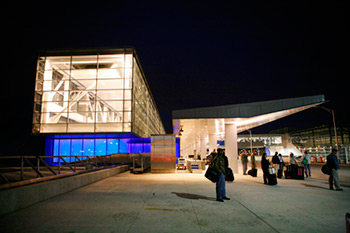 Mass transit will also help supercharge development of the Aerotropolis plan. The idea is that Metro Airport’s status as a major airline hub will spur economic development in the surrounding region – to the tune of billions of dollars of investment and thousands of new jobs over the next couple decades.
Mass transit will also help supercharge development of the Aerotropolis plan. The idea is that Metro Airport’s status as a major airline hub will spur economic development in the surrounding region – to the tune of billions of dollars of investment and thousands of new jobs over the next couple decades.
Furthermore, connecting Metro Airport with more than just the automobile is also seen as a way of improving the quality of life in Metro Detroit. It’s an avenue to staunching Michigan’s brain drain by attracting international investment. it’s also a much-needed amenity. Anyone who has tried to find holiday parking at the airport or pay for more than a week can attest to the attractiveness of a five buck trip via train.
Metro Detroit isn’t just competing with other transit-poor Midwestern cities like Indianapolis and Cleveland. They must fight major urban centers that are way ahead on the mass transit curve for the same pool of talent and investment. It might be the right time for southeast Michigan to build its first rail lines in decades, but it needs the convenience they bring now more than ever.
“I think the Aerotropolis idea and the connectivity of that region with all of southeast Michigan is extremely important,” Rizik says. “As we found in our work, having Detroit Metropolitan Airport is a huge asset for folks interested in doing business conveniently both in Detroit and where I am sitting in Ann Arbor. Having a vital Aerotropolis and having easier transportation from various parts of southeast Michigan to the airport will enhance that even more. That’s a really important point.”
Woodward
It’s a point Matthew Cullen not only recognizes and respects but has seen play out. The former executive at GM headed up development at the behemoth corporation for years. He was a driving force behind GM’s move to the Renaissance Center and is now an executive with Quicken Loans, 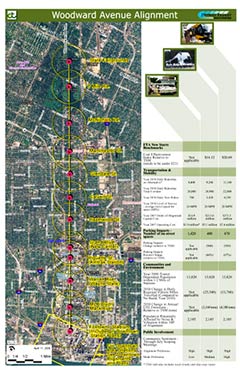 in charge of shepherding that firm’s move to downtown Detroit.
in charge of shepherding that firm’s move to downtown Detroit.
He’s also in charge of the proposed $100 million Woodward streetcar line between Detroit’s downtown and New Center. The city’s business elite (Roger Penske, Dan Gilbert and the Ilitch family) brought him in to make it happen. He knows building that light rail line will mean some big changes for the Lower Woodward Corridor, which is currently a mixed bag of urban blight and ambitious redevelopment.
“There will be a lot more density and development,” Cullen says. “This brings the ability to move around within an urban core. People will be much more ready to move up and down to the museums or to the restaurants or the new condos located at the transit stops. I think we’ll see a lot more density. We’ll see a lot more development. We’ll see a lot more retail. A lot more urban energy is what we’re going to end up with in a short period of time.”
These aren’t just the ramblings of another executive drinking the corporate Kool-Aid. Research shows that the return on investment along permanent mass transit lines is more than 4 to 1.
Billions of dollars of dense development have followed light rail lines in even the most car-centric communities, like St. Louis, Denver and Houston. Even a historically horizontal city like Phoenix is prepping for major investment now that its new light rail line has opened to rave reviews.
Detroiters definitely think they’re city is special but the conventional wisdom of the experts is that not even the Motor City can buck this trend. They all maintain that there will be fewer vacant buildings and parcels of urban prairie in the greater downtown area the longer the light rail line is operational and farther it pushes up Woodward.
“Over time it will serve to concentrate economic and residential activity along the Woodward Corridor,” Boyle says. “It is quite clear from history over the last 100 years that investment in fixed transit links resulted in concentration of development. There is no doubt that it occurs.”
There is enough confidence in this idea that Detroit Renaissance has made the line major component of its Road to Renaissance plan for Metro Detroit. It sees the Woodward streetcar line as a key part of that plan and particularly its Creative Corridor Initiative, which coincidentally has the same boundaries as the first 3.5 mile leg of the light rail line.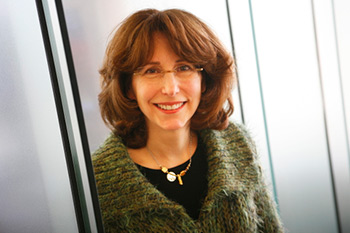
“I think it helps with the Creative Corridor and we recognized that as we were going through this process that yes it would be a tremendous asset,” says Sabrina Keeley, vice president of Detroit Renaissance and one of the key organizers behind the Creative Corridor Initiative. “We also knew it wouldn’t happen overnight, so we weren’t holding our breath. I don’t mean that negatively. These things are very large projects that take a lot of money, so if it could happen it would be wonderful for our region. We do lack that [mass transit] and it is an important component, particularly for that younger generation.”
Obama stimulus hope
One of the marque representatives of that younger generation is our new commander-in-chief.
President Barack Obama’s administration is pondering a FDR-style public works bill worth somewhere in the neighborhood of $1 trillion. Investment in mass transit projects is often thrown around as a significant part of that plan by the mainstream media. Its no secret that Metro Detroit is the perfect candidate for that type of major investment.
“Quite frankly we should have had public transportation a long time ago, but we need it even more now,” Wayne County’s Ficano says. “Perhaps we will get an opportunity from the stimulus package from President Obama.”
He is not being coy with that. Local officials and advocates for these mass transit projects are working with both the state government (some of the money might come in the form of block grants) and Michigan’s congressional delegation. They all say the Detroit-Ann Arbor and Woodward rail lines are at the top of their lobbying list.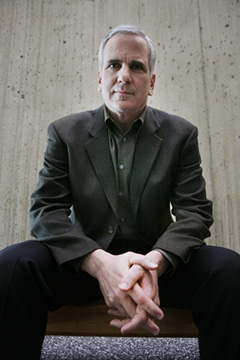
But vast sums of money have been dedicated to creating comprehensive mass transit in Metro Detroit before. Most famously former President Gerald Ford put aside that money in the 1970s. It languished and eventually vanished because of bickering among local officials.
Project after project to establish comprehensive mass transit in southeast Michigan has come and gone before and after that debacle. All we have to show for it is the barely adequate People Mover.
There is hope that enough local leaders, both inside and outside of government and on both sides of 8 Mile Road, are on the same page. Whether it’s enough to make it happen, only time will tell. The good news is that a lot of powerful people are feeling more hopeful than ever.
“It feels for me a lot like the Riverfront project, where we have a great public-private partnership coming together to get it done,” Cullen says. “I think that is the most effective way. I think in many of these significant projects it is leveraging the strengths of both public and private that you can move things and get them done and get them done quicker. It’s not like a private industry can come in and build a railroad in the middle of town without being linked in with the governmental agencies involved. Likewise it’s tough for them to do it without the financial support and the business acumen and the drive that the private side brings to it. People should take confidence because of the public-private base and the private individuals that are going to be involved in championing it.
Jon Zemke is



